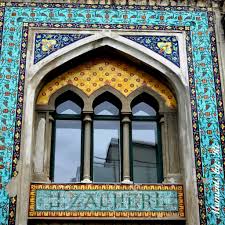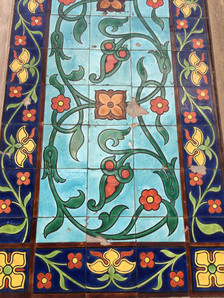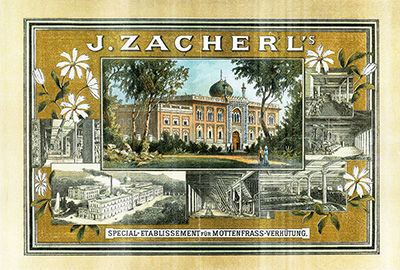- Henna

- Oct 20, 2021
- 6 min read
Updated: Oct 21, 2021
What I love about Vienna is that it is full of spectacular architecture; not just in the immediate heart of the city, but even the outskirts of the city are full of beautiful old buildings. Frankly, some of these buildings seem also quite bizarre - as if they are somehow out of place, representing totally different cultures or countries. It is often these buildings which have the juiciest stories to tell. Also, the history of old Viennese buildings: their architects, original layouts, builders, their rightly owners throughout the years (even owners’ mortgages…), is very well documented in the central and district property registries of Vienna - the registries that were established by the one and only HRH the Empress Maria Theresia already back in the 18th century. Just let that sink in for a moment: what a humongous number of stories cumulated over the years thanks to one determined woman who just happened to fancy order and clarity. And talk about proper contact tracing!
So, this time I would like to introduce you to one of those juicy stories - a story of Zacherlfabrik. The building that I have walked by few times and always thought that it is a mosque, or that at least someone important from the Middle East must own it or live in it. But boy, was I wrong!
Family business fuelled by insect repellent
The Zacherlfabrik got its name from its founder, an entrepreneur Johann Zacherl (1814-1888). Johann Zacherl was born in Munich, but after finishing his studies he left the city and never returned to Germany to live. The very entrepreneurial minded Zacherl wanted to see and experience the world: he travelled to Vienna, St. Petersburg and Odessa, until eventually he reached the Caucasus mountains (Tbilisi). During his trip in Caucasus, he came across grated pyrethrum flowers, which were used locally as effective insect repellent. Zacherl immediately came up with a business idea: the buildings of European cities were full of un-welcomed insects and pests which were driving people crazy. So, while in Caucasus, he agreed with some villages that they would collect phyrethrum flowers for him and bring them to Tbilisi, where he was living at the time. There they would be ground into fine powder and transported to Vienna. He would then sell this "Persian wonder powder" in Austria and in rest of Europe by the name "Zacherlin". And so he did.
Over the years Vienna became the permanent home for Johann Zacherl. Already in 1842 he founded a trading company which imported tea, amber, rum, rugs, oil paintings and Zacherlin powder to Vienna, and exported metal goods, medical equipment and toys from Vienna to Tbilisi. However, it was not until year 1854, at the fine age of 40, that he decided permanently to move from Tbilisi to Vienna. A year later he married Anna Haas, and their eldest son, Johann Evangelist Zacherl, was born in 1857.
In 1861 Johann and Anna Zacherl decided to travel together to Tbilisi. After this trip in 1863 Zacherl got a permission to manufacture the Zacherlin powder in Vienna. The trading business alone had proved to be huge success for Zacherl, but the start of manufacturing the powder in Vienna made him one of the wealthiest men in Austria. By 1870 the company had already grown considerably and Zacherlin was being produced in a modest factory in Nusswaldgasse in the 19th district of Vienna (Döbling). Already during the 1870’s the Zacherlin insect repellent was very well-known in the world’s major cities due to its excellent branding and market presence. Dedicated shops were opened in Paris, Istanbul, Amsterdam, Philadelphia, New York and London. Johann Zacherl had managed to create a global brand and business empire around simple insect repellent.
The next generations
In 1880 Johann Zacherl handed the business over to his son Johann Evangelist who had inherited the great business instincts of his father. In 1888 (the same year his father died) Evangelist Zacherl commissioned architect brothers Karl and Julius Mayreder to create a new, modernized factory building based on the design of architect he especially admired, Hugo von Wiedenfeld. By 1893 the new factory building with its unusual Persian look was standing in the same location where the old factory had been. In addition to the production of Zacherlin, the new manufacturing site offered also rug and fur repair, storage and cleaning services. As the business grew and grew, Evangelist Zacherl wanted to establish administrative headquarters for the company in the city center of Vienna. He commissioned a young Slovenian architect Josef Plecnik for the job. The Zacherlhaus was built between 1903-05, and it was the first modern building in the city center of Vienna.
After WWI, due to the rise of export taxes and chemical industries, it became hard for the very traditional insect repellent manufacturer to stay in business. When Evangelist Zacherl died in 1936, his son Georg took the helm. Despite some new business endeavors, difficulties remained. In 1949 Georg Zacherl decided to give up business activities and retire. He died in 1954. In 1958 the company was erased from the company register.
To this day the Zacherlfabrik and Zacherlhaus buildings have remained in the ownership of Zacherl family. From 1958 to 2006, for 48 years, the Zacherfabrik building remained mostly unused; parts of it deteriorating into a repair state, other parts being rented out to companies, and some parts serving as storage space.
An exciting new phase for Zacherlfabrik started in 2006, when Veronika and Peter Zacherl - the current representatives of the family - opened the Zacherlfabrik for art projects in cooperation with the Jesuite Art Fund. For the purpose Zacherlfabrik was refurbished; floors removed, and spaces merged into a hall which could be used for various art exhibitions and music performances. The new mission of Zacherlfabrik was to be a space for unexpected encounters and relaxed experiments for its visitors. Indeed, until the end of summer 2013 many exhibitions and music performances took place every year during the summer months. Unfortunately, in 2013 they needed to be stopped due to official license requirements, which would have required more profound and costly modifications to the building.
Architectural significance of Zacherlfabrik
The Zacherlfabrik is unique within the architectural landscape of Vienna. On one hand, it represents the typical European factory architecture of the industrial revolution: a factory made of exposed brick and the subtle accents highlighted by red paint which emphasize the windows. On the other hand, there are numerous special decorative elements on its façade, which was often the case in residential and office buildings of industrial entrepreneurs who wanted to emphasize their upper-class position in society. But such decorations were not common in industrial buildings. The Persian style exterior of Zacherlfabrik and the use of numerous ornaments (e.g., custom made coloured tiles made by Wienerberger brick factory) on its façade, point more to the neo-oriental historical architectural style which was also common during the 19th century. It is often claimed that the real model for the exterior of Zacherlfabrik was the The Shah Mosque in Isfahan (Iran).
But there was also deeper and more business savvy meaning in Zacherlfabrik’s special appearance. By making the building distinctively recognizable and unconventional, the factory became the hallmark of the company - the center of its brand and identity. Evangelist Zacherl wanted to bring a piece of the exotic orient to Vienna with his factory. Maybe this was also a way to pay tribute to the legacy of his late father, who had traveled to those exotic places. The special appearance was also an effective way to commercialize and advertise Zacherlin product and the services they offered. Indeed, numerous advertising posters from the 19th century show how they advertised their Zacherlin with images of the factory. This orientalizing style became Zacherl's trademark also for other products and business endeavours.
So, there you have it! The story of Zacherlfabrik in a nutshell. This was fun to research and write! As for the past eight years this grand building has been standing there empty again – waiting for something to happen - I also kind of feel sad now. Is there something I should or could do to enable it to find its new purpose again? A movement to initiate perhaps…or just go there next time I walk by and knock on the door? I hear, the current spokesperson of the family, Peter Zacherl, is also an architect, so he must have something interesting lined up for this building. Can’t wait!
(Image credits: Mein Bezirk & Onni Interiors)
(Sources: Marie Theres Mikhail: The Zacherlfabrik. An industrial building in an oriental guise. Dipl.-Arb. Univ. Vienna. Vienna 2012, wien.gov.at, oeaw.ac.at, zacherlfabrik.at)
I'm an interior designer who writes stories about interior design inspirations, ideas, furniture and architecture from around the world. My mission is to entertain you during your morning coffee - to show you how the world is full of interesting design stories - and to make you look your own surroundings differently. You are part of a story! I also run an interior design studio Onni Interiors. Welcome to be part of Design Stories!











Comments